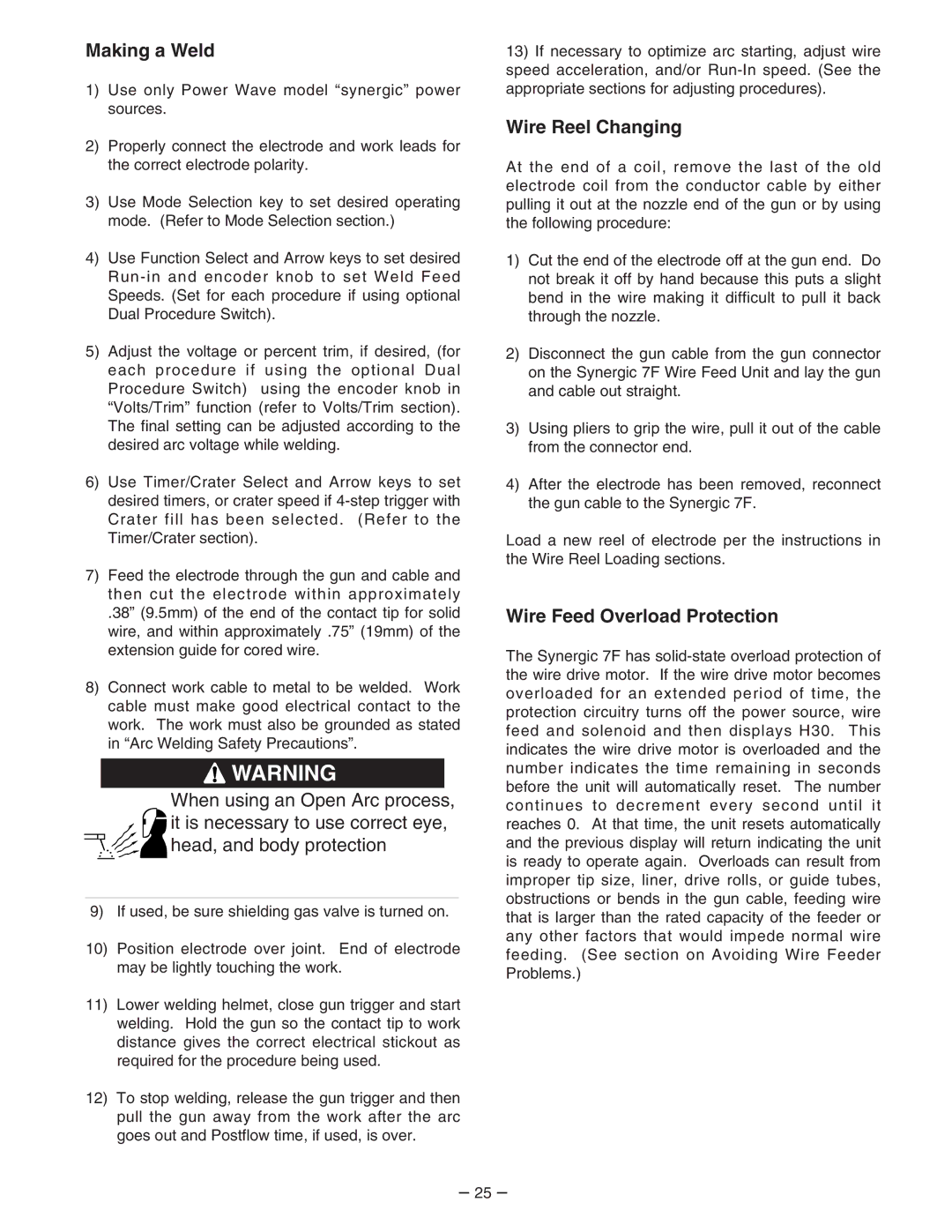
Making a Weld
1)Use only Power Wave model “synergic” power sources.
2)Properly connect the electrode and work leads for the correct electrode polarity.
3)Use Mode Selection key to set desired operating mode. (Refer to Mode Selection section.)
4)Use Function Select and Arrow keys to set desired Run - in and encoder knob to set Weld Feed Speeds. (Set for each procedure if using optional Dual Procedure Switch).
5)Adjust the voltage or percent trim, if desired, (for each procedure if using the optional Dual Procedure Switch) using the encoder knob in “Volts/Trim” function (refer to Volts/Trim section). The final setting can be adjusted according to the desired arc voltage while welding.
6)Use Timer/Crater Select and Arrow keys to set desired timers, or crater speed if
7)Feed the electrode through the gun and cable and then cut the electrode within approximately
.38” (9.5mm) of the end of the contact tip for solid wire, and within approximately .75” (19mm) of the extension guide for cored wire.
8)Connect work cable to metal to be welded. Work cable must make good electrical contact to the work. The work must also be grounded as stated in “Arc Welding Safety Precautions”.
![]() WARNING
WARNING
When using an Open Arc process, it is necessary to use correct eye, head, and body protection
____________________________________
9) If used, be sure shielding gas valve is turned on.
10)Position electrode over joint. End of electrode may be lightly touching the work.
11)Lower welding helmet, close gun trigger and start welding. Hold the gun so the contact tip to work distance gives the correct electrical stickout as required for the procedure being used.
12)To stop welding, release the gun trigger and then pull the gun away from the work after the arc goes out and Postflow time, if used, is over.
13)If necessary to optimize arc starting, adjust wire speed acceleration, and/or
Wire Reel Changing
At the end of a coil, remove the last of the old electrode coil from the conductor cable by either pulling it out at the nozzle end of the gun or by using the following procedure:
1)Cut the end of the electrode off at the gun end. Do not break it off by hand because this puts a slight bend in the wire making it difficult to pull it back through the nozzle.
2)Disconnect the gun cable from the gun connector on the Synergic 7F Wire Feed Unit and lay the gun and cable out straight.
3)Using pliers to grip the wire, pull it out of the cable from the connector end.
4)After the electrode has been removed, reconnect the gun cable to the Synergic 7F.
Load a new reel of electrode per the instructions in the Wire Reel Loading sections.
Wire Feed Overload Protection
The Synergic 7F has
– 25 –
